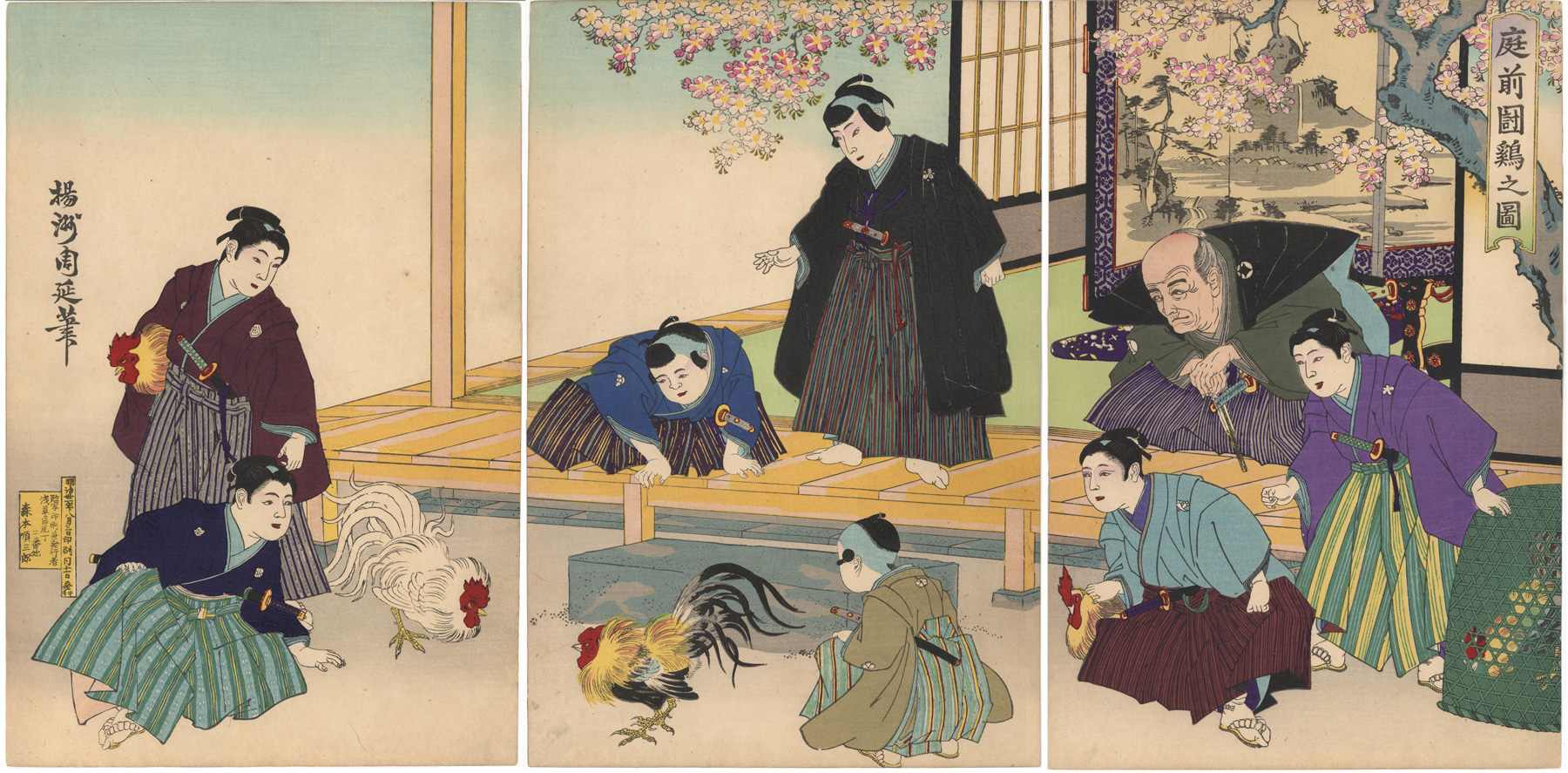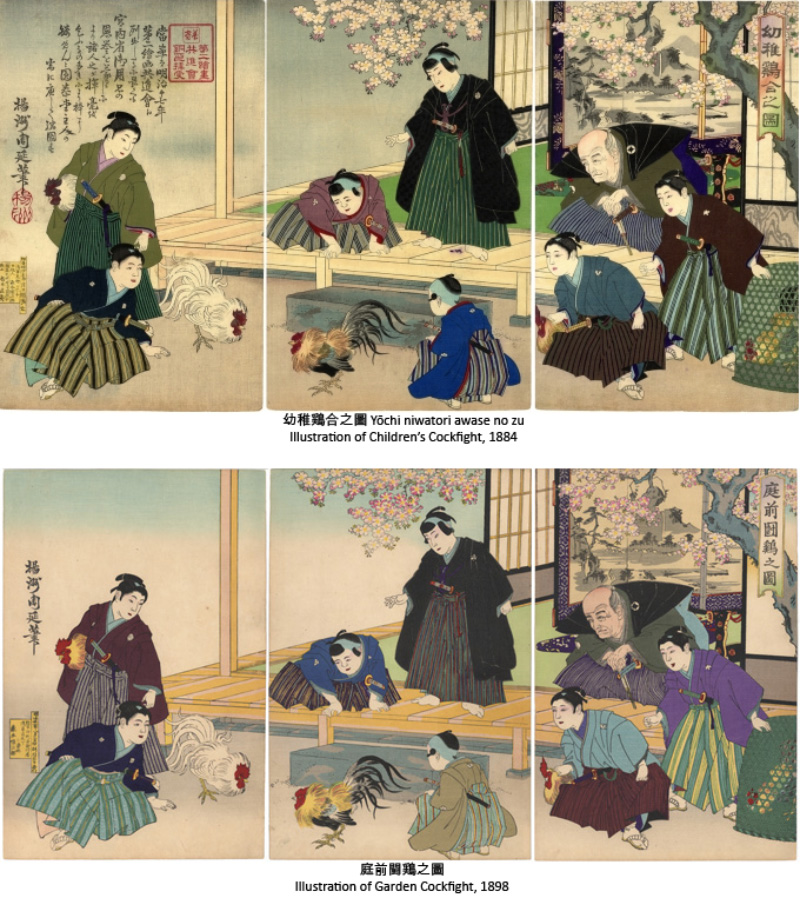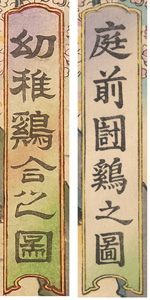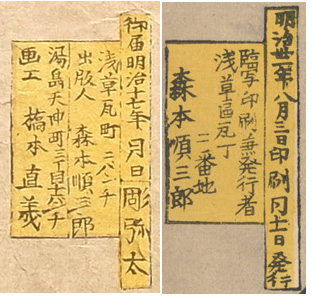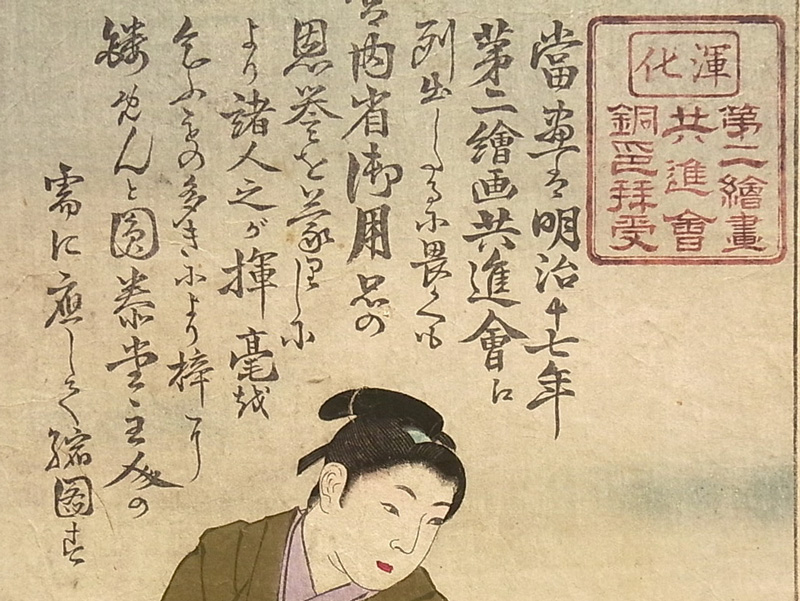About This Print
Young samurai, supervised by an elder, watch the beginning of a cockfight in the garden. This print is a 1898 reissue of an 1884 woodblock print (shown below) of a painting made by Chikanobu for the government sponsored Second Painting Competitive Exhibition, held in April 1884. As detailed below, after the original painting was awarded a bronze prize and then purchased by the Imperial Household Agency, the publisher Morimoto Junzaburō (firm name Entaidō) issued a woodblock print reproduction of the painting in response to public demand.
When this collection's print was reissued fourteen years after the original print, the publisher changed the title, removed explanatory text from the left panel, removed the artist's seal below his signature and changed many of the colors used for the samurai's robes. It is not known why the publisher decided to re-issue this print in 1898.
A Comparison of the Original 1884 Print and this Collection's 1898 Print
The Explanation on the Original Print
Source: Chikanobu: Modernity and Nostalgia in Japanese Prints, Bruce A. Coats, Hotei Publishing, 2006, p. 36.
According to the inscription on the left side [see above], this composition was originally a painting by Chikanobu that he entered in the Second Domestic Painting Competitive Exhibition (Dai ni Naikoku kaiga kyōshinkai 第二絵画共進会) held in Ueno Park from April 11 to May 30, 1884. The text on the print ‘Children’s Cockfight’ (Yōchi niwatori awase no zu) proudly announces the "bronze" competition prize and the purchase by the Imperial Household Agency (Kunaishō), and indicates there was a public demand for woodblock printed copies of this work. Such public and prominent notoriety for Chikanobu’s work must have boosted his standing in Tokyo’s artist community
The size and current location of the original painting has not been determined yet, but judging from other extant Chikanobu paintings, "Children's Cockfight" was probably done in colors on silk in a hanging scroll format.
The Ministry of Agriculture and Commerce sponsored the first Domestic Painting Competitive Exhibition (Naikoku kaiga kyōshinkai) in 1882, prompted by Meiji government officials having visited such publicly sponsored exhibitions in Europe. The show was designed to promote contemporary artists working in traditional Japanese painting styles (nihonga), rather than in Western painting styles (yōga). The emperor was a supporter of the arts and purchased a number of hanging scrolls and screen paintings for his personal quarters.
The 1884 painting and print ‘Children’s Cockfight’ clearly shows that Chikanobu was involved in the discussions taking place in Tokyo about the future of Japanese art and the role of historical subject matter in the visual arts. As Western art, Western artistic techniques and Western art material continued to be imported into Japan during the 1870-1880’s, a reaction against outside influences and in favor of native traditions gained momentum. Public debate was emerging about the very definitions of ‘art,’ ‘fine arts,’ and ‘Japanese art.’ As Victoria Weston notes, ‘…a convincing self-definition could counter the implicitly invidious definitions handed down by Western colonial powers, and could serve to combat the unequal relationships justified by the definitions. Historians worked to pierce the veil of the distant past to find the origins of the Japanese people and the native roots of Japanese culture in order to define an essential Japanese-ness and thereby bolster Japan’s national unity and its international fortunes.’ Depictions of Japanese historical figures and of Japan’s distinctive lifestyles were two ways in which Chikanobu, and other artists, tried to answer those questions about how the unique qualities of Japanese art and art history could be highlighted, celebrated and preserved.
Print Details
| IHL Catalog | #1220 |
| Title or Description | Illustration of Garden Cockfight 庭前闘鶏之圖 |
| Series | |
| Artist | Yōshū Chikanobu (1838-1912) |
| Signature |  |
| Seal | |
| Publication Date |  |
| Publisher | 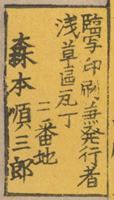 [Marks: pub. ref. 349; seal not shown] |
| Carver | |
| Impression | excellent |
| Colors | excellent |
| Condition | good - backed with heavy album paper; trimmed to image; minor soiling; three separate sheets |
| Genre | ukiyo-e |
| Miscellaneous | |
| Format | vertical oban triptych |
| H x W Paper | 13 13/16 x 9 1/4 in. (35.1 x 23.5 cm) each sheet |
| H x W Image | same as paper size |
| Literature | Chikanobu: Modernity and Nostalgia in Japanese Prints, Bruce A. Coats, Hotei Publishing, 2006, p. 36-37. |
| Collections This Print | Honolulu Museum of Art 29115 (the original 1884 print); Scripps College Ruth Chandler Williamson Gallery 2006.1.1 (the original 1884 print) |


